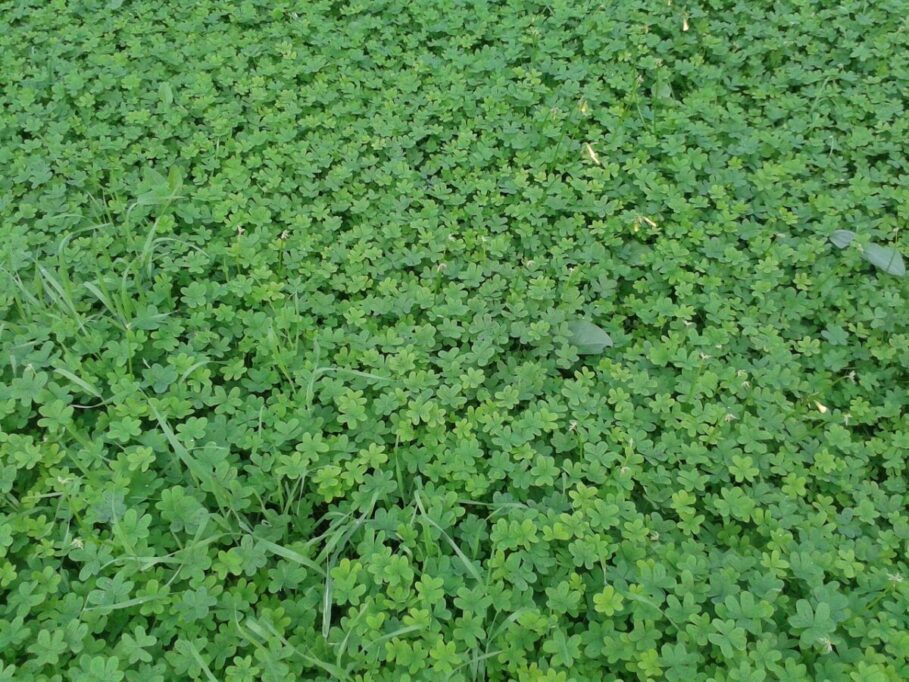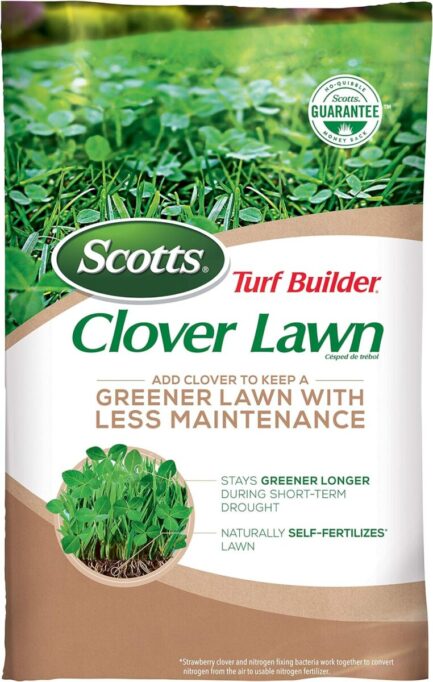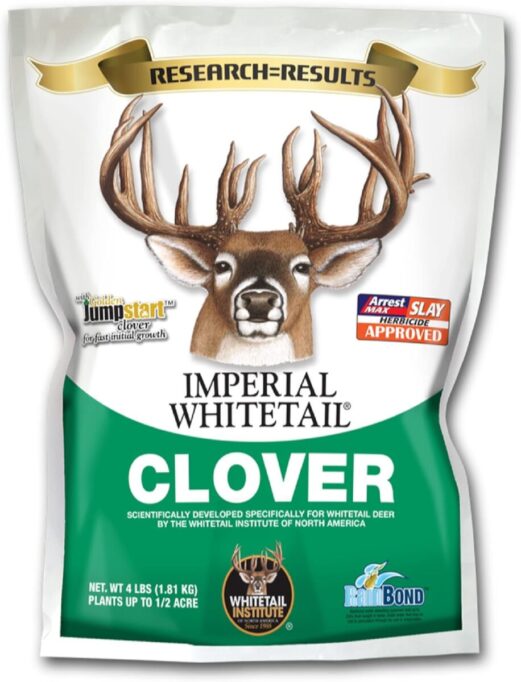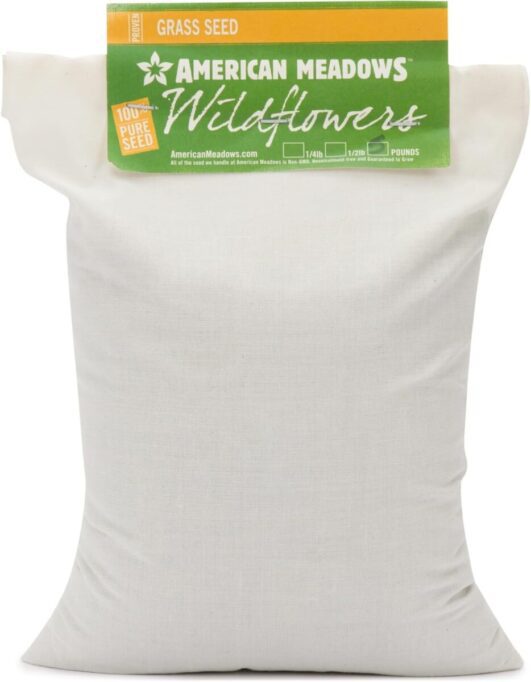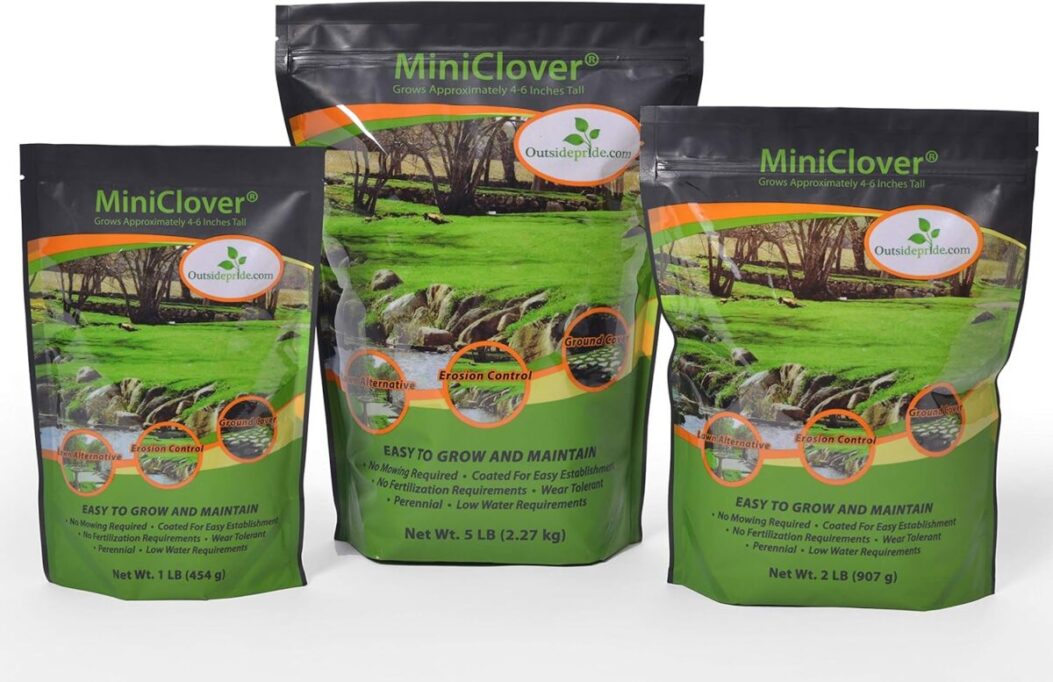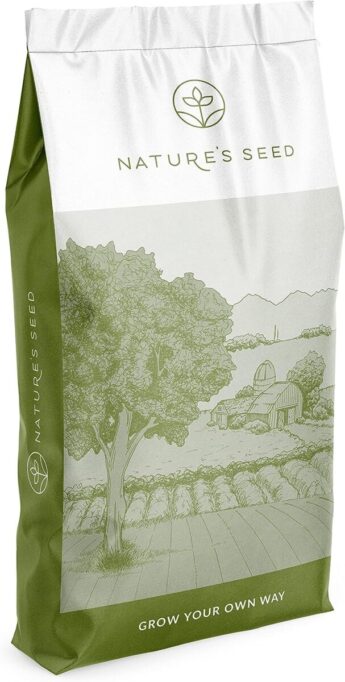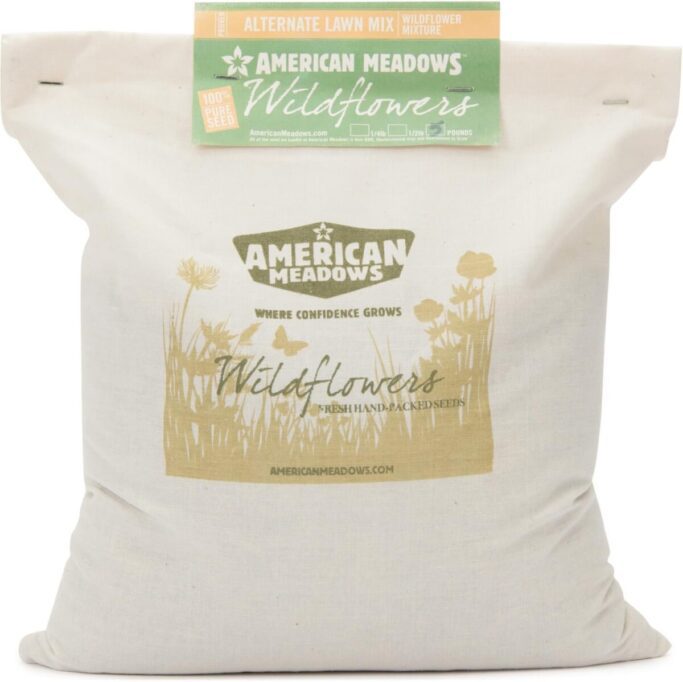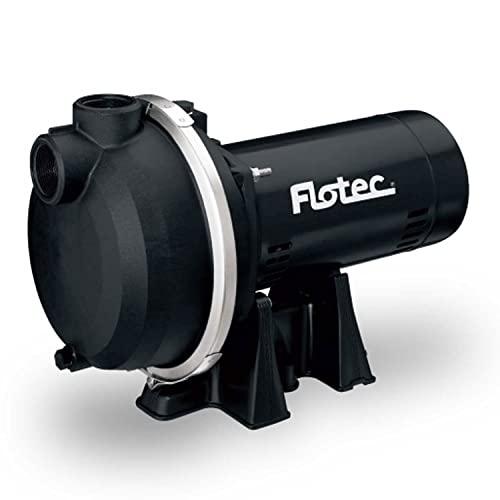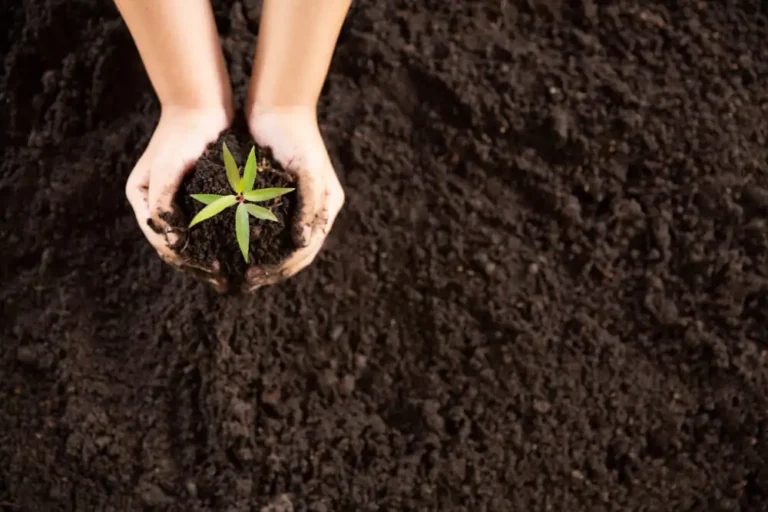How to Grow a Clover Lawn Fast and Easy
Did you know that clover is not just a lucky charm, but also a great alternative to grass for your lawn? Clover is a low-maintenance, drought-tolerant, and eco-friendly plant that can transform your yard into a green oasis. Plus, it attracts bees, butterflies, and other beneficial insects that help pollinate your garden.
In this article, I’ll show you how to grow a clover lawn fast and easy, with minimal effort and cost. You’ll learn how to choose the best clover seed for your lawn, how to prepare the soil and sow the seeds, and how to care for your clover lawn throughout the year. You’ll also discover the benefits of clover lawns and how they can save you time, money, and water. I’m a professional writer and a certified landscaper with over 10 years of experience in creating beautiful and sustainable outdoor spaces.
I’ve planted and maintained hundreds of clover lawns for my clients and myself, and I can assure you that they are one of the best grass lawn alternatives available. So, if you’re ready to ditch the grass and embrace the clover, read on and follow these simple steps to grow a clover lawn that will make your neighbors green with envy.
Table of Contents
What is Clover and Why It’s Good for Your Lawn
Clover is a type of legume that belongs to the same family as peas, beans, and peanuts. It has small, round leaves and white or pink flowers that bloom in spring and summer. Clover is often considered a weed by some lawn owners, but it can actually be a great addition to your lawn for many reasons. Here are some of the benefits of different clover varieties and how they can improve your lawn’s health and appearance.
White clover is the most common and widely available type of clover. It grows up to 6 inches tall and can tolerate a range of soil and climate conditions. White clover is ideal for lawns that receive moderate to high foot traffic, as it can withstand mowing and trampling. White clover also attracts bees and other pollinators, which can help your garden flourish. According to the University of Minnesota Extension, white clover can reduce the need for nitrogen fertilizer by up to 75%, as it can fix nitrogen from the air and transfer it to the soil.
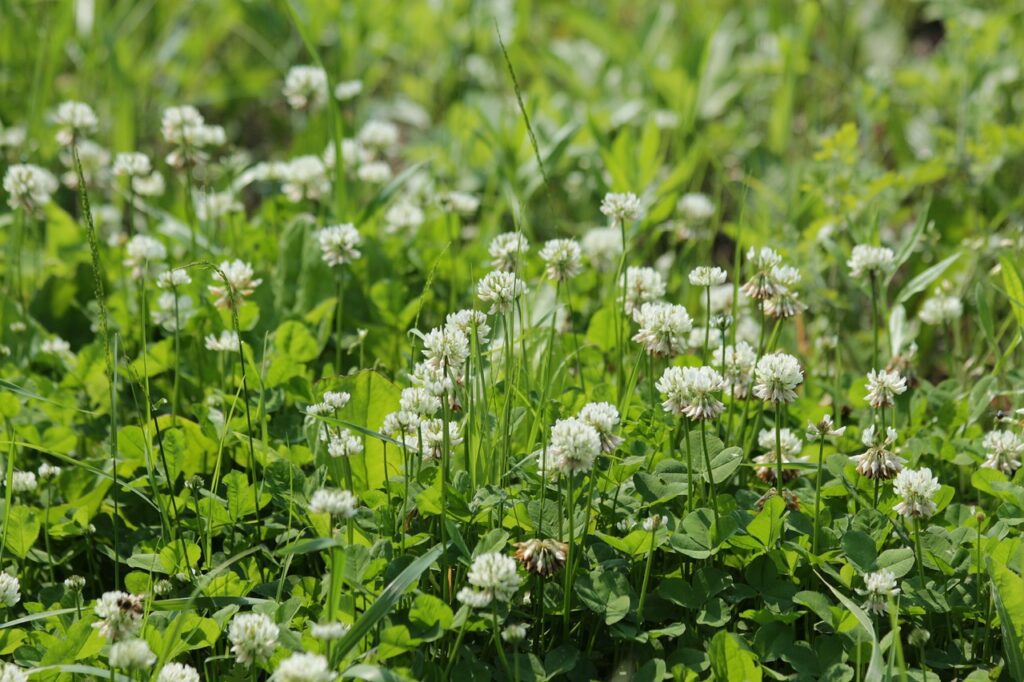
Microclover is a newer and smaller variety of white clover that has been bred to have smaller leaves and flowers. It grows up to 4 inches tall and can blend well with grass. Microclover is perfect for lawns that receive low to moderate foot traffic, as it can create a dense and uniform carpet of green. Microclover also has a higher drought tolerance than white clover, as it can retain more water in its leaves. According to the Oregon State University Extension, microclover can reduce water use by up to 30%, compared to a typical grass lawn.
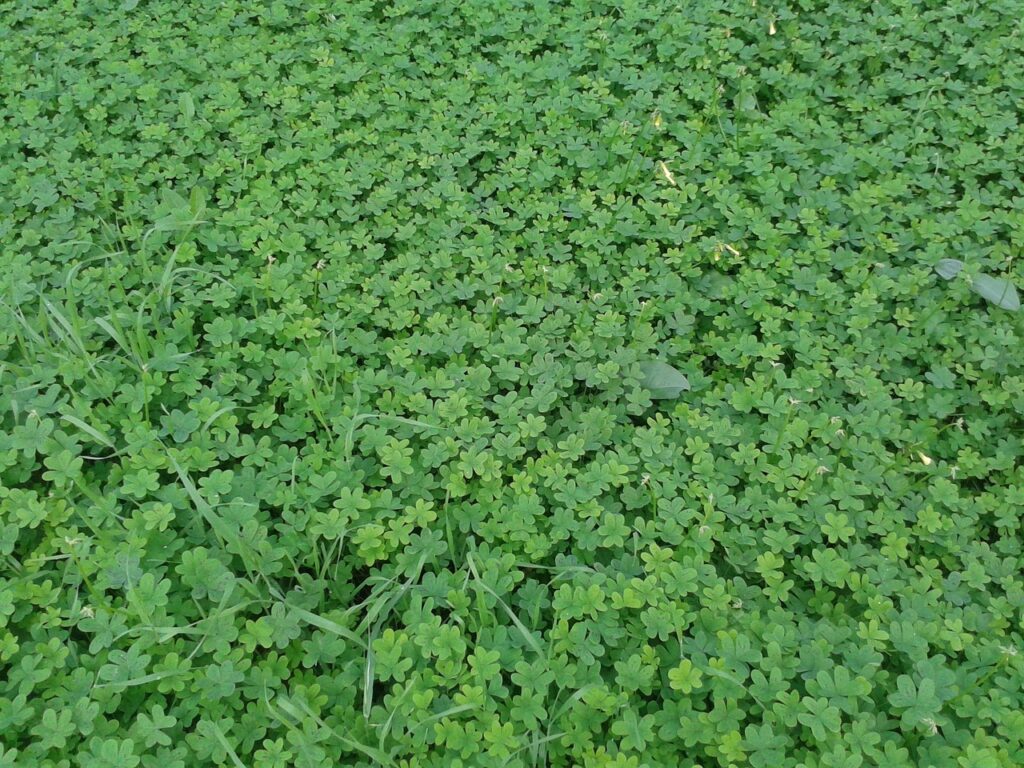
Red clover is a taller and more colorful type of clover that has reddish-purple flowers. It grows up to 18 inches tall and prefers moist and fertile soil. Red clover is best suited for lawns that receive little to no foot traffic, as it can be damaged by mowing and trampling. Red clover also attracts butterflies and hummingbirds, which can add beauty and diversity to your landscape. According to the University of Wisconsin Extension, red clover can provide up to 150 pounds of nitrogen per acre per year, which can boost the growth and quality of your grass.
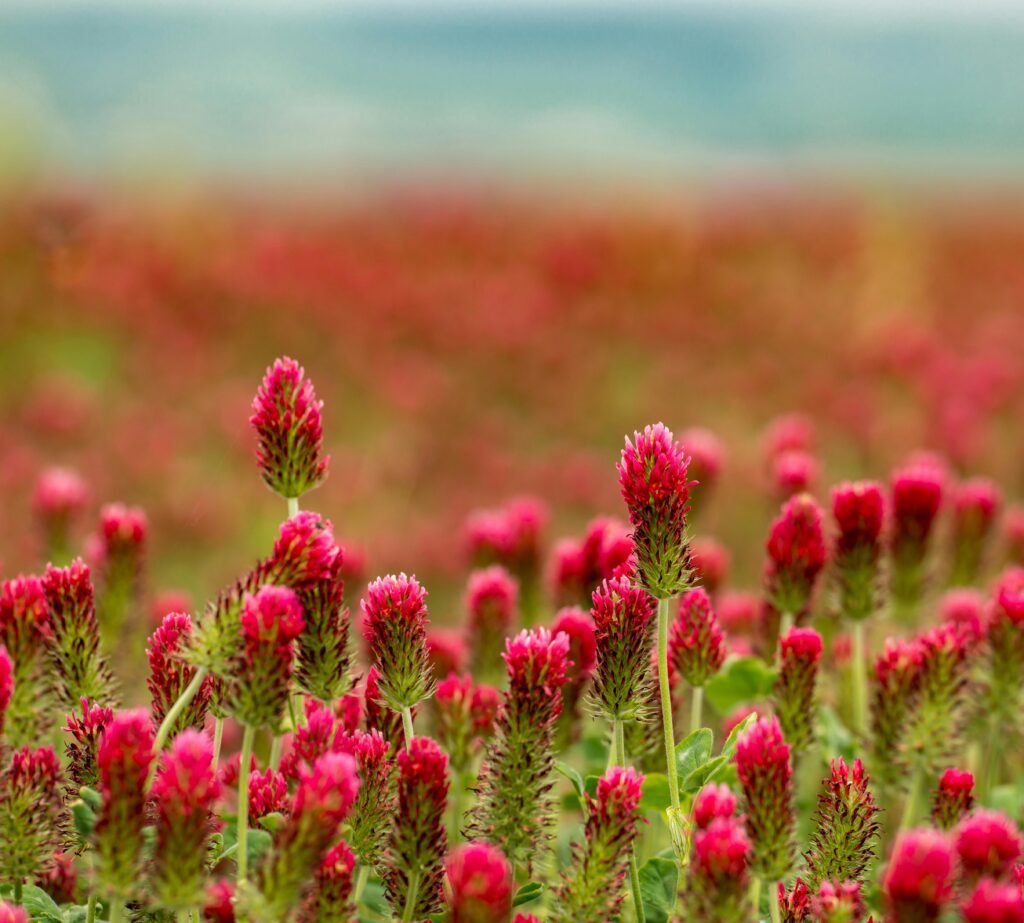
One of the main advantages of clover is that it can enrich the soil through nitrogen fixation. Nitrogen is an essential nutrient for plants, but it is often scarce in the soil. Clover can form a symbiotic relationship with bacteria that live in its roots, and together they can convert nitrogen from the air into a form that plants can use. This process can increase the fertility and organic matter of the soil, which can benefit not only the clover, but also the grass and other plants that grow with it.
Another benefit of clover is that it can crowd out weeds naturally. Clover can compete with weeds for space, light, water, and nutrients, and prevent them from taking over your lawn. Clover can also release chemicals that inhibit the growth of some weeds, such as crabgrass and dandelions. This can reduce the need for herbicides, which can harm the environment and your health. Clover can also help prevent soil erosion and compaction, as it can form a thick and resilient mat of roots and stems that can hold the soil in place and improve its structure.
Clover lawns are lower maintenance than grass lawns, once they are established. Clover does not need to be mowed as often as grass, as it can stay at a reasonable height and look neat and tidy. Clover does not need to be fertilized as much as grass, as it can produce its own nitrogen and share it with the grass. Clover does not need to be watered as much as grass, as it can survive dry spells and retain moisture in its leaves. Clover can also resist pests and diseases better than grass, as it can produce natural defenses and deter insects and fungi.
Clover is not only a lucky charm, but also a smart choice for your lawn. Clover can offer many benefits, such as improving soil quality, reducing weeds, and saving water and fertilizer. Clover can also enhance the beauty and biodiversity of your lawn, by attracting pollinators and wildlife. Clover can be planted alone or mixed with grass, depending on your preference and lawn conditions. Clover can be easily grown from seed, which can be found online or in stores. If you want to learn more about how to plant and grow a clover lawn, stay tuned for the next section of this article.
Why Clover Lawns Are Better Than Grass Lawns
If you’re looking for a way to make your lawn more eco-friendly, beautiful, and low-maintenance, you might want to consider switching to a clover lawn. Clover lawns are becoming more popular among homeowners who want to reduce their environmental impact, save money, and enjoy a lush and green lawn all year round. Clover lawns have many advantages over grass lawns, such as:
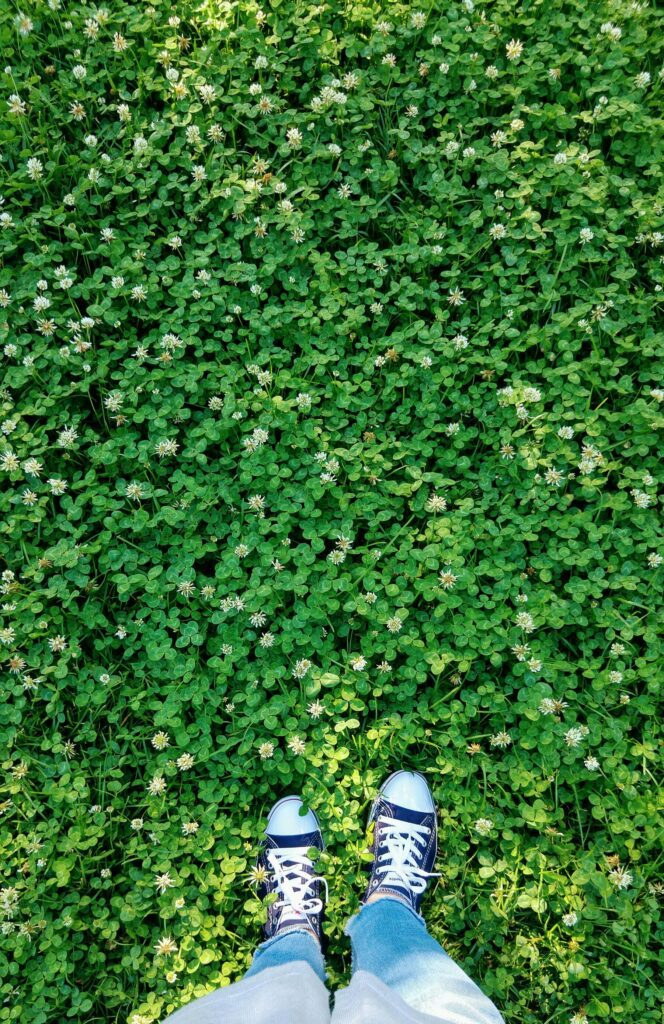
Clover lawns save water, fertilizer, and mowing compared to grass. Clover is a drought-tolerant plant that can survive on less water than grass, especially during the hot and dry summer months. According to the University of California Cooperative Extension, clover lawns can use up to 50% less water than grass lawns.
Clover also produces its own nitrogen, which means it does not need any synthetic fertilizer to grow and thrive. This can save you money and reduce the pollution and runoff caused by chemical fertilizers.
Clover also grows at a slower and more even rate than grass, which means it does not need to be mowed as often or as high. This can save you time and energy, as well as reduce the noise and emissions from your lawn mower.
Clover attracts pollinators and provides habitat for beneficial insects. Clover is a flowering plant that produces nectar and pollen for bees, butterflies, and other pollinators. These insects are essential for the reproduction and diversity of many plants, including fruits, vegetables, and flowers. By planting a clover lawn, you can help support the pollinator population and the health of your garden.
Clover also hosts beneficial insects, such as ladybugs, lacewings, and parasitic wasps, that prey on pests like aphids, mites, and caterpillars. These insects can help control the pest population and reduce the need for pesticides, which can harm the environment and your health.
Clover prevents erosion and improves soil quality through nitrogen fixation. Clover has a deep and extensive root system that can hold the soil in place and prevent erosion from wind and water. This can protect your lawn from damage and improve its drainage and aeration.
Clover also enriches the soil through nitrogen fixation, a process that converts nitrogen from the air into a form that plants can use. Nitrogen is an essential nutrient for plant growth and health, but it is often scarce in the soil. Clover can share its nitrogen with the grass and other plants that grow with it, which can increase the fertility and organic matter of the soil. This can benefit not only your lawn, but also your garden and the surrounding ecosystem.
Clover can handle foot traffic and looks greener than dormant grass. Clover is a resilient and adaptable plant that can withstand moderate to high foot traffic, such as from children, pets, or visitors. Clover can bounce back from trampling and mowing, and can fill in any bare spots quickly and easily.
Clover also stays green longer than grass, especially during the winter months when grass goes dormant and turns brown. Clover can maintain its color and vitality even in cold and shady conditions, which can make your lawn look more attractive and inviting throughout the year.
As you can see, clover lawns are better than grass lawns in many ways. Clover lawns can save you water, fertilizer, and mowing, attract pollinators and beneficial insects, prevent erosion and improve soil quality, and handle foot traffic and look greener than grass.
Clover lawns are also easy to plant and grow, as you will learn in the next section of this article. If you’re ready to make the switch to a clover lawn, read on and follow these simple steps to create a lawn that is good for you, your wallet, and the planet.
How to Choose the Best Clover Seed for Your Lawn
Before you start planting your clover lawn, you need to choose the best clover seed for your lawn. There are many types and varieties of clover seeds available, and each one has its own pros and cons. You need to consider factors such as your climate, your lawn conditions, your desired lawn appearance, and your budget. Here are some tips and recommendations on how to compare and choose the best clover seed for your lawn.
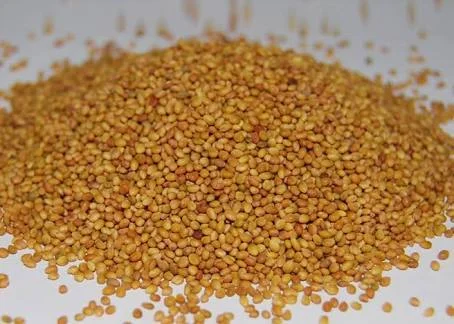
Compare the pros and cons of different clover varieties.
As mentioned in the previous section, there are three main types of clover that are suitable for lawns: white clover, microclover, and red clover. Each one has its own advantages and disadvantages, depending on your lawn needs and preferences. Here is a summary of the pros and cons of each clover variety:
| Clover Variety | Pros | Cons |
|---|---|---|
| White clover | – Easy to find and affordable – Tolerates a range of soil and climate conditions – Reduces the need for nitrogen fertilizer by up to 75% – Creates a thick and lush lawn – Attracts bees and other pollinators | – Grows taller than grass and needs more frequent mowing – Attracts bees and other insects that may sting or bite – Can be invasive and spread to unwanted areas – Can be susceptible to diseases and pests |
| Microclover | – More aesthetically pleasing and less noticeable than white clover – Reduces water use by up to 30% – Stays green longer than grass – Resists diseases and pests better than white clover – Blends well with grass | – Harder to find and more expensive – Slow to establish and fill in – Sensitive to herbicides and salt – Still attracts bees and other insects |
| Red clover | – More ornamental and showy than white or micro-clover – Provides up to 150 pounds of nitrogen per acre per year – Improves the soil quality and structure – Can be used as a cover crop or a green manure – Attracts butterflies and hummingbirds | – Not suitable for high traffic areas – Grows taller than grass and needs more frequent mowing – Can be invasive and spread to unwanted areas – Can be susceptible to diseases and pests |
Choose seed based on your climate and lawn conditions.
Once you have compared the pros and cons of different clover varieties, you need to choose the one that best suits your climate and lawn conditions. You need to consider factors such as your hardiness zone, your soil type, your sun exposure, your irrigation system, and your lawn size. Here are some guidelines on how to choose the best clover seed based on your climate and lawn conditions:
- Hardiness zone. Your hardiness zone is a measure of how cold your winter temperatures are, and it can affect the survival and growth of your plants. Clover can grow in most hardiness zones, but some varieties are more cold-tolerant or heat-tolerant than others. White clover and micro-clover can grow in zones 3 to 9, while red clover can grow in zones 4 to 8. You can find your hardiness zone by entering your zip code on the USDA Plant Hardiness Zone Map website.
- Soil type. Your soil type is a measure of how well your soil drains water, and it can affect the moisture and nutrient availability of your plants. Clover can grow in most soil types, but some varieties are more adaptable or demanding than others. White clover and micro-clover can grow in a wide range of soil types, from sandy to clayey, as long as they are well-drained and moderately fertile. Red clover prefers moist and rich soil, and may not do well in dry or poor soil. You can test your soil type by using a simple jar test or a soil test kit.
- Sun exposure. Your sun exposure is a measure of how much direct sunlight your lawn receives, and it can affect the photosynthesis and flowering of your plants. Clover can grow in full sun to partial shade, but some varieties are more shade-tolerant or sun-tolerant than others. White clover and micro-clover can grow in both sun and shade, but they may produce more flowers and seeds in full sun. Red clover prefers full sun to light shade, and may not do well in heavy shade. You can measure your sun exposure by using a sun calculator or a sun map.
- Irrigation system. Your irrigation system is a measure of how you water your lawn, and it can affect the water use and drought tolerance of your plants. Clover can survive on less water than grass, but some varieties are more water-efficient or drought-tolerant than others. White clover and micro-clover can reduce water use by up to 50% and 30%, respectively, compared to a typical grass lawn. Red clover requires more water than white or micro-clover, and may not do well in dry conditions. You can choose your irrigation system based on your water availability, your water budget, and your water conservation goals. You can use sprinklers, drip irrigation, soaker hoses, or rain barrels to water your clover lawn.
- Lawn size. Your lawn size is a measure of how much area you want to cover with clover, and it can affect the amount and cost of clover seed you need. Clover can cover a large or small area, but some varieties are more economical or efficient than others. White clover and micro-clover can cover a large area with a small amount of seed, as they can spread quickly and easily. Red clover can cover a small area with a large amount of seed, as it can grow taller and thicker. You can calculate the amount and cost of clover seed you need by using a seed calculator or a seed estimator.
Choosing the best clover seed for your lawn is an important step in creating a successful and sustainable clover lawn. By comparing the pros and cons of different clover varieties and choosing the one that best suits your climate and lawn conditions, you can ensure that your clover lawn will grow and thrive in your yard. In the next section of this article, you will learn how to prepare the soil and sow the clover seeds for your clover lawn.
How to Prepare the Soil and Sow the Clover Seeds
After you have chosen the best clover seed for your lawn, you need to prepare the soil and sow the seeds. This is a crucial step in ensuring that your clover lawn will germinate and grow well. You need to consider factors such as your soil pH, your seeding time, and your seeding method. Here are some tips and instructions on how to prepare the soil and sow the clover seeds for your clover lawn.
Test your soil pH and amend it as needed.
Clover prefers a slightly acidic to neutral soil pH, between 6.0 and 7.0. If your soil is too acidic or too alkaline, it can affect the availability of nutrients and the growth of clover. You can test your soil pH by using a simple soil test kit or a digital soil meter. If your soil pH is too low, you can raise it by adding lime. If your soil pH is too high, you can lower it by adding sulfur. You can follow the instructions on the product label or consult a local extension agent for the recommended amount and application method. You should apply the amendments at least a few weeks before seeding, to allow them time to react with the soil.
Seed based on your hardiness zone.
Your hardiness zone is a measure of how cold your winter temperatures are, and it can affect the best time to seed your clover lawn. Clover can be seeded in spring or fall, depending on your zone and your clover variety. Spring seeding is recommended for zones 3 to 5, where winters are harsh and clover may not survive. Fall seeding is recommended for zones 6 to 9, where winters are mild and clover can establish before the next growing season. You can find your hardiness zone by entering your zip code on the USDA Plant Hardiness Zone Map website. You should also check the seed label or the seed supplier’s website for the optimal seeding time for your clover variety.
Choose a seeding technique for new lawns or overseeding into grass.
There are two main ways to seed your clover lawn: seeding a new lawn from scratch, or overseeding into an existing grass lawn. Seeding a new lawn from scratch is recommended if you want a pure clover lawn, or if your grass lawn is in poor condition and needs to be replaced. Overseeding into an existing grass lawn is recommended if you want a mixed clover and grass lawn, or if your grass lawn is in good condition and just needs some improvement. Here are the steps for each seeding technique:
Seeding a new lawn from scratch.
To seed a new lawn from scratch, you need to clear the area of any existing vegetation, rocks, or debris. You can use a shovel, a hoe, a rake, or a sod cutter to remove the unwanted material. You can also use an herbicide to kill any weeds or grass, but make sure to follow the safety precautions and the waiting period before seeding.
After clearing the area, you need to loosen the soil to a depth of 4 to 6 inches, using a tiller, a spade, or a fork. You can also add some organic matter, such as compost or manure, to improve the soil quality and fertility. You should rake the soil to create a smooth and even surface, and water it lightly to settle it.
Then, you need to spread the clover seed evenly over the soil, using a broadcast spreader, a drop spreader, or your hand. You can follow the seeding rate recommendation on the seed label or the seed supplier’s website, or use a general rule of thumb of 2 to 4 ounces of clover seed per 1000 square feet.
You should lightly rake the seed into the soil, to a depth of 1/4 to 1/2 inch, and press it firmly with a roller or your foot. You should water the seed lightly and frequently, to keep the soil moist but not soggy, until the clover germinates and establishes. You can expect to see the first signs of germination in 7 to 14 days, depending on the clover variety and the weather conditions.
Overseeding into an existing grass lawn.
To overseed into an existing grass lawn, you need to mow the grass to a height of 2 to 3 inches, and remove any clippings, leaves, or debris. You can use a lawn mower, a string trimmer, or a scythe to cut the grass. You can also use a dethatcher, a rake, or a scarifier to remove any thatch or dead material that may prevent the clover seed from reaching the soil.
After mowing and dethatching, you need to aerate the soil to improve its drainage and aeration. You can use a core aerator, a spike aerator, or a fork to create small holes in the soil, about 2 to 3 inches deep and 4 to 6 inches apart. You can also add some organic matter, such as compost or manure, to fill the holes and improve the soil quality and fertility.
Then, you need to spread the clover seed evenly over the grass, using a broadcast spreader, a drop spreader, or your hand. You can follow the seeding rate recommendation on the seed label or the seed supplier’s website, or use a general rule of thumb of 1 to 2 ounces of clover seed per 1000 square feet. You should lightly rake the seed into the soil, to a depth of 1/4 to 1/2 inch, and press it firmly with a roller or your foot.
You should water the seed lightly and frequently, to keep the soil moist but not soggy, until the clover germinates and establishes. You can expect to see the first signs of germination in 7 to 14 days, depending on the clover variety and the weather conditions.
Preparing the soil and sowing the clover seeds are essential steps in creating a successful and sustainable clover lawn. By testing your soil pH and amending it as needed, seeding based on your hardiness zone, and choosing a seeding technique for new lawns or overseeding into grass, you can ensure that your clover lawn will germinate and grow well. In the next section of this article, you will learn how to care for your clover lawn throughout the year.
When to plant clover seed for lawn
The best time to plant clover seed for lawn depends on the type of clover and the region you live in. Generally, clover should be planted in the spring or fall, when the soil temperature is between 50°F and 65°F, and the moisture level is optimal. Planting clover in the summer can expose the seeds and seedlings to high heat and drought stress, which can reduce the germination rate and survival rate. However, some clovers, such as crimson clover and berseem clover, can be planted in the summer as a cover crop or green manure
Here are some guidelines on when to plant clover seed for lawn in different regions of USA:
- Northeast and Midwest: These regions have cold winters and hot summers, so the best time to plant clover is in the spring (mid-March to mid-May) or in the fall (late August to early October). Clover can survive frost and snow, but it may need some protection from extreme cold or heavy snow cover. Clover can also tolerate heat and humidity, but it may need some supplemental watering during prolonged droughts.
- South and Southeast: These regions have mild winters and warm to hot summers, so the best time to plant clover is in the fall (September to November) or in the winter (late January to early March). Clover can grow well in these regions, as long as it has enough moisture and nutrients. Clover can also benefit from the longer growing season and the warmer soil temperature. However, clover may face competition from weeds and pests, so it may need some weed control and pest management.
- West and Southwest: These regions have dry and hot summers and mild to cold winters, so the best time to plant clover is in the fall (September to November) or in the spring (March to May). Clover can adapt to these regions, as long as it has enough water and fertilizer. Clover can also improve the soil quality and structure by adding organic matter and nitrogen. However, clover may suffer from heat and drought stress, so it may need some irrigation and mulching.
When to plant clover in georgia
The best time to plant clover in Georgia depends on the type of clover and the region you live in. Generally, clover should be planted in the fall (September-October) or in the winter (late January to early March), when the soil temperature is between 50°F and 65°F, and the moisture level is optimal. Planting clover in the summer can expose the seeds and seedlings to high heat and drought stress, which can reduce the germination rate and survival rate. However, some clovers, such as crimson clover and berseem clover, can be planted in the summer as a cover crop or green manure
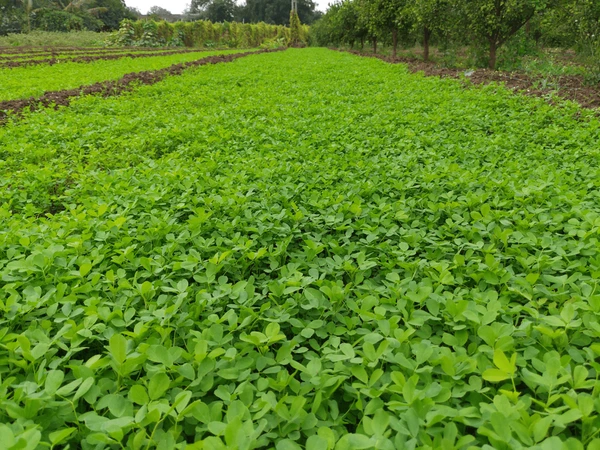
For more specific information on when to plant clover in Georgia, you can refer to this table of average frost dates for most major cities in Georgia, or this guide on the characteristics and management of selected cool season annual clovers. You can also check your local weather report and soil conditions before planting clover. I hope this helps you grow a successful clover lawn.
How to Care for Your Clover Lawn Throughout the Year
Once you have planted and grown your clover lawn, you need to care for it throughout the year. Clover lawns are lower maintenance than grass lawns, but they still need some attention and care to keep them healthy and beautiful. You need to consider factors such as watering, fertilizing, mowing, and managing weeds and pests. Here are some tips and recommendations on how to care for your clover lawn throughout the year.
Watering and fertilizing requirements for a healthy clover lawn.
Clover lawns need less water and fertilizer than grass lawns, but they still need some to survive and thrive. The amount and frequency of watering and fertilizing depend on your clover variety, your soil type, your climate, and your lawn condition. Here are some general guidelines on how to water and fertilize your clover lawn:
Watering. Clover lawns can survive on rainfall alone in most regions, but they may need supplemental watering during dry spells or droughts. You should water your clover lawn deeply and infrequently, rather than shallowly and frequently, to encourage deep root growth and drought tolerance. You should water your clover lawn early in the morning or late in the evening, to avoid water loss from evaporation and sun scorch. You should water your clover lawn until the soil is moist but not soggy, and let it dry out slightly between waterings. You can use a rain gauge, a soil moisture meter, or your finger to check the soil moisture level. You should water your clover lawn about once a week in the summer, and once every two weeks in the spring and fall, depending on the weather and the soil conditions. You should not water your clover lawn in the winter, unless it is very dry and warm.
Fertilizing. Clover lawns can produce their own nitrogen, which means they do not need any synthetic fertilizer to grow and thrive. However, they may benefit from some organic fertilizer or compost to provide other nutrients and improve the soil quality. You should fertilize your clover lawn once or twice a year, preferably in the spring and fall, to boost its growth and color. You should use a slow-release, organic fertilizer or compost that is low in nitrogen and high in phosphorus and potassium, such as 5-10-10 or 4-8-12. You should follow the instructions on the product label or consult a local extension agent for the recommended amount and application method. You should avoid using any fertilizer or compost that contains herbicides, as they can harm or kill your clover lawn
Mowing frequency and height for different clover varieties.
Clover lawns need less mowing than grass lawns, but they still need some to keep them neat and tidy. The frequency and height of mowing depend on your clover variety, your desired lawn appearance, and your lawn condition. Here are some general guidelines on how to mow your clover lawn:
Managing weeds and pests without herbicides. Clover lawns can crowd out weeds naturally, but they may still need some weed management to keep them weed-free and healthy. Clover lawns can also resist pests and diseases better than grass lawns, but they may still need some pest management to prevent and control any potential problems. You should avoid using any herbicides or pesticides on your clover lawn, as they can harm or kill your clover and other beneficial organisms. Here are some natural and organic ways to manage weeds and pests on your clover lawn:
Weed management. Clover lawns can compete with weeds for space, light, water, and nutrients, and prevent them from taking over your lawn. Clover lawns can also release chemicals that inhibit the growth of some weeds, such as crabgrass and dandelions. However, some weeds may still grow and thrive in your clover lawn, especially if the soil is poor or disturbed. You should manage weeds on your clover lawn by using one or more of the following methods:
Hand weeding. Hand weeding is the simplest and most effective way to remove weeds from your clover lawn. You should hand weed your clover lawn regularly, preferably before the weeds flower and set seed, to prevent them from spreading and multiplying. You should use a weeding tool, such as a hoe, a trowel, or a fork, to dig out the weeds by their roots, and dispose of them properly. You should also fill in any bare spots with clover seed or compost, to prevent new weeds from germinating.
Mulching. Mulching is a way to cover the soil with a layer of organic material, such as straw, wood chips, or leaves, to suppress weed growth and improve soil quality. You should mulch your clover lawn lightly and evenly, to a depth of 1 to 2 inches, to block the sunlight and moisture that weeds need to grow. You should avoid using any mulch that contains weed seeds, herbicides, or salt, as they can harm your clover lawn. You should also avoid using any mulch that is too thick or too heavy, as it can smother your clover lawn and prevent air circulation.
Solarization. Solarization is a way to use the sun’s heat to kill weeds and their seeds in the soil. You should solarize your clover lawn in the summer, when the sun is strong and the days are long, to achieve the best results. You should mow your clover lawn as short as possible, and water it thoroughly, to create a moist and warm environment for the weeds. Then, you should cover your clover lawn with a clear plastic sheet, and secure it with rocks, bricks, or stakes, to trap the heat and moisture. You should leave the plastic sheet on your clover lawn for 4 to 6 weeks, or until the weeds are dead and decomposed. Then, you should remove the plastic sheet, and reseed or overseed your clover lawn, to restore its growth and appearance.
Pest management.
Clover lawns can produce natural defenses and deter pests, such as insects and fungi, that may damage or destroy your lawn. Clover lawns can also host beneficial insects, such as ladybugs, lacewings, and parasitic wasps, that prey on pests, such as aphids, mites, and caterpillars. However, some pests may still attack and infest your clover lawn, especially if the plants are stressed or weakened. You should manage pests on your clover lawn by using one or more of the following methods:
Cultural control. Cultural control is a way to prevent and reduce pest problems by maintaining a healthy and vigorous clover lawn. You should practice good cultural control on your clover lawn by watering, fertilizing, mowing, and aerating it properly, to enhance its growth and resistance. You should also avoid overwatering, overfertilizing, overmowing, or compacting your clover lawn, as they can stress the plants and make them more susceptible to pests. You should also monitor your clover lawn regularly, and identify and remove any diseased or infested plants, to prevent the spread and outbreak of pests.
Biological control. Biological control is a way to control and reduce pest populations by using natural enemies, such as predators, parasites, or pathogens, that can kill or weaken the pests. You should encourage biological control on your clover lawn by attracting and releasing beneficial organisms, such as ladybugs, lacewings, parasitic wasps, nematodes, or bacteria, that can feed on or infect the pests. You should also avoid using any pesticides or chemicals that can harm or kill the beneficial organisms, as they can disrupt the natural balance and cause more pest problems.
Mechanical control. Mechanical control is a way to physically remove or exclude pests from your clover lawn by using barriers, traps, or tools. You should use mechanical control on your clover lawn by installing fences, nets, or covers, to prevent pests, such as deer, rabbits, or birds, from eating or damaging your clover. You should also use traps, such as sticky traps, pheromone traps, or pitfall traps, to catch and kill pests, such as moths, beetles, or slugs, that
Mowing frequency. Clover lawns grow at a slower and more even rate than grass lawns, which means they do not need to be mowed as often. You should mow your clover lawn when it reaches the desired height, or when it starts to flower, depending on your preference. You should mow your clover lawn about once a month in the summer, and once every two months in the spring and fall, depending on the growth rate and the weather. You should not mow your clover lawn in the winter, unless it is very warm and sunny.
Mowing height. Clover lawns can be mowed at different heights, depending on your clover variety and your desired lawn appearance. You should mow your clover lawn at a height that allows it to compete with weeds, retain moisture, and look green and lush. You should mow your clover lawn at a height of 2 to 3 inches for white clover and microclover, and 3 to 4 inches for red clover, depending on your preference. You should not mow your clover lawn too short, as it can stress the plants and expose the soil to weeds and erosion. You should not mow your clover lawn too high, as it can look messy and attract pests.
How to Deal with Common Clover Lawn Problems and Pests
Clover is a popular choice for lawns, as it provides many benefits such as nitrogen fixation, drought tolerance, and pollinator attraction. However, clover is not immune to diseases and pests that can affect its health and appearance. In this article, we will discuss some of the common clover lawn problems and pests, how to identify and treat them, and how to prevent them from recurring.
Identifying and treating potential diseases or insect issues
Clover can be susceptible to various fungal and viral diseases that can cause symptoms such as yellowing, wilting, stunting, spotting, or mottling of the leaves and stems. Some of the common diseases that affect clover are:
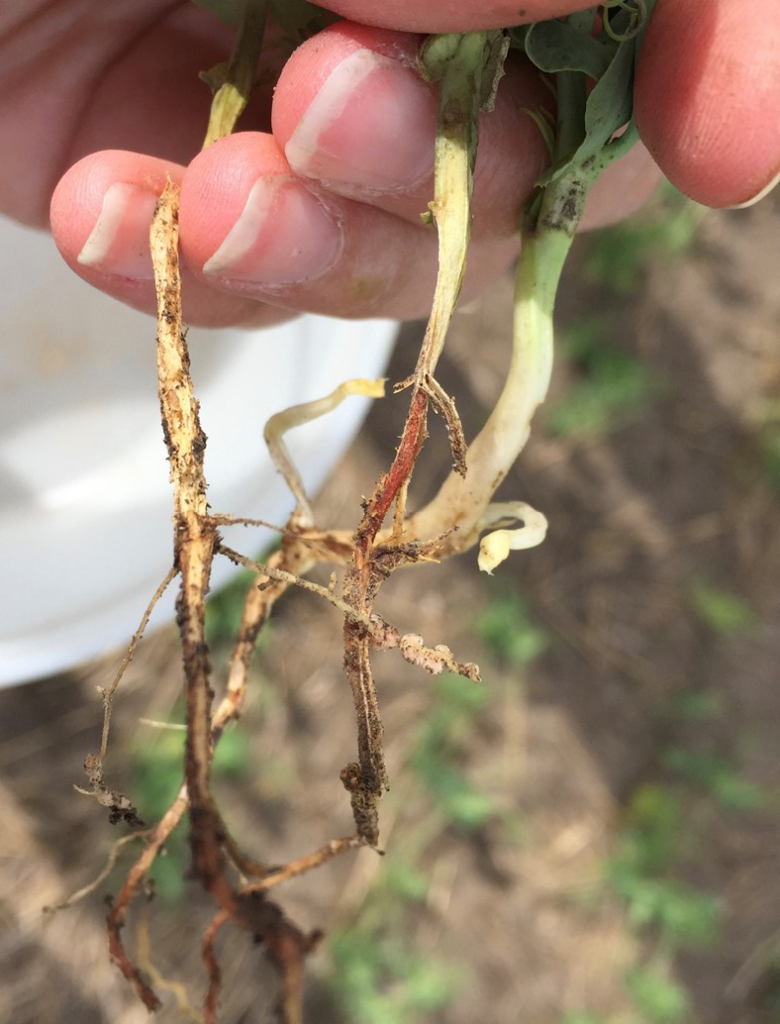
- Clover root rot: This is caused by the Fusarium oxysporum fungus that infects the roots and causes them to rot. The disease can result in reduced growth, yellowing of leaves, and wilting of plants. To identify clover root rot, look for brown and decayed roots and yellowing leaves that start from the base and move upwards. To prevent and treat clover root rot, avoid planting clover in soil that has been previously infected, use fungicides to treat infected plants, and improve soil drainage and aeration.
- Clover anthracnose: This is caused by the Colletotrichum trifolii fungus that infects the leaves and stems and causes brown or black spots with reddish-purple borders. The disease can result in reduced growth, defoliation, and death of plants. To identify clover anthracnose, look for small brown or black spots on the leaves or stems. To prevent and treat clover anthracnose, avoid planting clover in areas with poor drainage or water accumulation, use fungicides to treat infected plants, and remove and destroy infected plant debris.
- Clover rust: This is caused by the Uromyces trifolii fungus that infects the leaves and causes yellow or orange rust spots with a powdery texture. The disease can result in reduced growth, photosynthesis, and nitrogen fixation. To identify clover rust, look for yellow or orange rust spots on the leaves. To prevent and treat clover rust, avoid planting clover in areas with poor air circulation or water accumulation, use fungicides to treat infected plants, and remove and destroy infected plant debris.
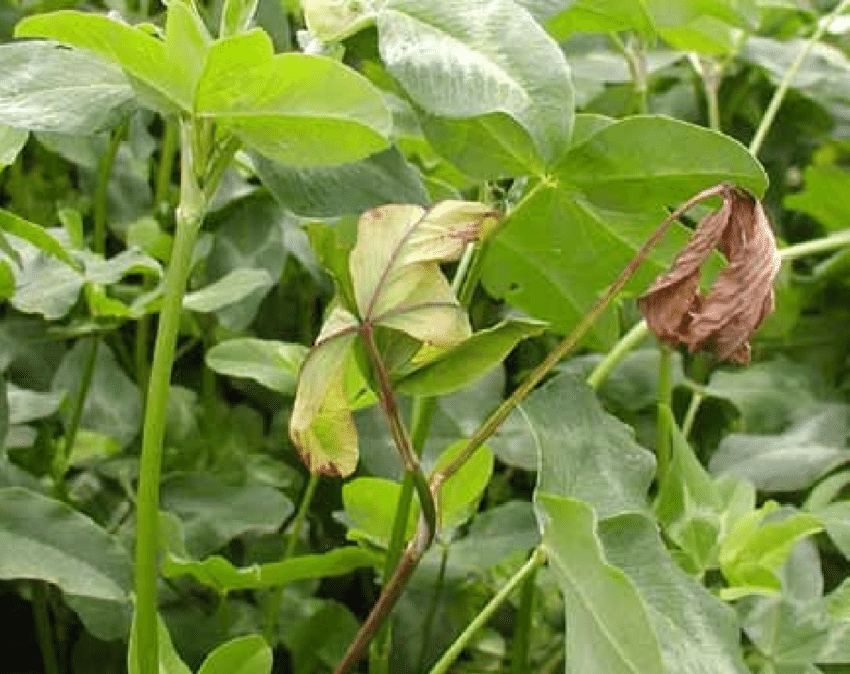
Clover can also be attacked by various insects that can feed on or damage the leaves, stems, roots, or flowers. Some of the common pests that affect clover are:
- Aphids: These are small, soft-bodied insects that suck the sap from the leaves and stems and excrete honeydew that attracts ants and fungi. Aphids can cause yellowing, curling, or distortion of leaves, reduced growth, and transmission of viral diseases. To identify aphids, look for clusters of tiny green, black, or pink insects on the undersides of leaves or on the stems. To prevent and control aphids, attract and release beneficial insects such as ladybugs, lacewings, or parasitic wasps that prey on aphids, use insecticidal soap or neem oil to spray infected plants, and remove and destroy heavily infested plant parts.
- Clover leaf weevils: These are small, brown beetles that feed on the leaves and stems of clover at night and hide in the soil during the day. Clover leaf weevils can cause notching, skeletonizing, or defoliation of leaves, reduced growth, and reduced nitrogen fixation. To identify clover leaf weevils, look for notched or skeletonized leaves and small, brown beetles or white, legless larvae in the soil. To prevent and control clover leaf weevils, use cultural methods such as mowing, rotating, or intercropping clover with other crops, use biological methods such as nematodes or fungi that infect the weevils, or use chemical methods such as insecticides to treat infected plants.
- Clover root curculios: These are small, gray or black weevils that feed on the roots and crowns of clover and create tunnels that allow entry of pathogens. Clover root curculios can cause reduced growth, yellowing of leaves, wilting of plants, and increased susceptibility to diseases. To identify clover root curculios, look for reduced growth, yellowing or wilting of leaves, and small, gray or black weevils or white, legless larvae in the soil. To prevent and control clover root curculios, use cultural methods such as mowing, rotating, or intercropping clover with other crops, use biological methods such as nematodes or fungi that infect the weevils, or use chemical methods such as insecticides to treat infected plants.

Hand weeding stubborn grass or filling in bare spots
Clover can compete with weeds for space, light, water, and nutrients, and prevent them from taking over the lawn. However, some weeds may still grow and thrive in the clover lawn, especially if the soil is poor or disturbed. One of the common weeds that can invade the clover lawn is grass, which can grow taller and faster than clover and create a patchy appearance. To remove grass from the clover lawn, hand weeding is the simplest and most effective method. Here are some steps to follow for hand weeding grass from the clover lawn:
- Water the lawn: Watering the lawn before weeding can help loosen the soil and make it easier to pull out the grass by the roots. Water the lawn deeply and thoroughly, and wait for a few hours or overnight before weeding.
- Use a weeding tool: Using a weeding tool, such as a hoe, a trowel, or a fork, can help dig out the grass by the roots and prevent it from regrowing. Insert the weeding tool into the soil near the base of the grass clump, and gently pry it out. Be careful not to damage the clover plants nearby.
- Dispose of the grass: After pulling out the grass, dispose of it properly in a compost bin or a trash bag. Do not leave the grass on the lawn, as it may re-root or drop seeds and spread more grass.
- Fill in the bare spots: After removing the grass, there may be some bare spots left on the lawn. To fill in the bare spots, you can either reseed or resod the area with clover. To reseed, scatter some clover seeds on the bare spot, and lightly rake them into the soil. To resod, cut a piece of clover sod that matches the size and shape of the bare spot, and place it on the soil. Press it firmly and water it well. Keep the area moist until the clover is established.
Clover is a low-maintenance and eco-friendly alternative to grass for lawns. By following these tips, you can deal with common clover lawn problems and pests, and enjoy a green and healthy lawn throughout the year.
Where to Find Clover Seeds Online or in Stores
Clover seeds can be easily purchased online or in stores, depending on your preference and convenience. Here are some of the advantages and disadvantages of each option, and some of the recommended seed suppliers and home improvement stores that sell clover seeds.
Online. Buying clover seeds online can offer you more choices, lower prices, and faster delivery. You can browse through different websites and compare the types, varieties, prices, and reviews of clover seeds. You can also order the exact amount and type of clover seeds you need, and have them delivered to your doorstep. However, buying clover seeds online can also have some drawbacks, such as shipping costs, delays, damages, or errors. You may also not be able to see or touch the actual seeds before buying them, and you may need to rely on the seller’s reputation and customer service. Some of the recommended online seed suppliers that sell clover seeds are:
- Whitetail Institute Imperial: This is a reputable and reliable seed company that offers a wide selection of organic and conventional clover seeds, such as white clover, microclover, red clover, crimson clover, and sweet clover. They also provide detailed information and instructions on how to plant and grow clover seeds, and they have a 100% satisfaction guarantee policy.
- American Meadows: This is a popular and trusted seed company that specializes in wildflower and grass seeds, including clover seeds. They offer several types and varieties of clover seeds, such as white clover, microclover, crimson clover, and purple prairie clover. They also have a non-GMO, neonicotinoid-free, and guaranteed to grow policy, and they provide helpful guides and tips on how to plant and care for clover seeds.
- Hancock Seed: This is a family-owned and operated seed company that sells high-quality and affordable clover seeds, such as white clover, red clover, crimson clover, and berseem clover. They also sell clover seed mixes, such as no mow lawn and microclover seed mix, and they offer free shipping on orders over $50.
✔ Natural self-fertilization
✔ Deep roots
✔ Easy to grow
✔ Environmentally friendly
❌ Climate sensitivity
❌ Herbicide sensitivity
✔ Promotes healthier fawns and more milk production in does.
✔ Cold, heat, and drought-resistant.
✔ Coated with RainBond for improved seedling survival.
✔ Lasts up to 5 years from a single planting.
❌ May require additional watering and care to establish in difficult conditions.
✔ Cold-hardy and drought-tolerant.
✔ Stays green year-round.
✔ Easy to grow and requires minimal mowing.
✔ Prevents weeds and offers durability.
❌ Mixed customer ratings.
Requires specific grass seed pairing for optimal results.
❌ Limited coverage compared to traditional grass seed options.
❌ May not thrive in all climates or soil conditions.
- In stores. Buying clover seeds in stores can offer you more convenience, security, and quality. You can visit your local home improvement or garden center and see or touch the actual seeds before buying them. You can also ask for advice or assistance from the staff, and you can avoid shipping costs, delays, or damages. However, buying clover seeds in stores can also have some drawbacks, such as limited choices, higher prices, and availability issues. You may not be able to find the exact type or variety of clover seeds you want, and you may need to travel to different locations or wait for the stock to arrive. Some of the recommended home improvement or garden center stores that sell clover seeds are:
- Home Depot: This is a well-known and respected home improvement store that sells a variety of lawn and garden products, including clover seeds. They offer several brands and types of clover seeds, such as Scotts, Pennington, and Barenbrug. They also have a low price guarantee policy, and they offer free delivery on orders over $45 or free in-store pickup.
- Lowe’s: This is another reputable and reliable home improvement store that sells a range of lawn and garden products, including clover seeds. They offer several brands and types of clover seeds, such as Scotts, Pennington, and Nature’s Seed. They also have a price match guarantee policy, and they offer free delivery on orders over $45 or free in-store pickup.
- Tractor Supply Co.: This is a leading and trusted farm and ranch store that sells a variety of agricultural and outdoor products, including clover seeds. They offer several brands and types of clover seeds, such as DLF, ForageMax, and GroundWork. They also have a satisfaction guarantee policy, and they offer free delivery on orders over $49 or free in-store pickup.
How to Estimate the Amount of Clover Seeds You Need
Clover seeds are usually sold by weight, such as ounces, pounds, or kilograms. The amount of clover seeds you need depends on the size of your lawn, the type of clover you choose, and the seeding method you use. Here are some steps to follow to estimate the amount of clover seeds you need:
- Measure your lawn. The first step is to measure the area of your lawn that you want to cover with clover. You can use a tape measure, a ruler, or a wheel to measure the length and width of your lawn in feet or meters. Then, multiply the length and width to get the area in square feet or square meters. For example, if your lawn is 20 feet long and 10 feet wide, the area is 200 square feet.
- Choose your clover type. The second step is to choose the type of clover you want to plant, such as white clover, microclover, or red clover. Each type of clover has a different seeding rate, which is the amount of seeds needed per unit of area. You can find the seeding rate on the seed label or the seed supplier’s website, or you can use a general rule of thumb. For example, the seeding rate for white clover is 2 to 4 ounces per 1000 square feet, for microclover is 1 to 2 ounces per 1000 square feet, and for red clover is 8 to 10 ounces per 1000 square feet.
- Choose your seeding method. The third step is to choose the seeding method you want to use, such as seeding a new lawn from scratch, or overseeding into an existing grass lawn. Each seeding method has a different seeding rate, depending on the desired density and coverage of clover. You can find the seeding rate on the seed label or the seed supplier’s website, or you can use a general rule of thumb. For example, the seeding rate for seeding a new lawn from scratch is 100% of the recommended seeding rate, and for overseeding into an existing grass lawn is 50% of the recommended seeding rate.
- Calculate the amount of clover seeds. The final step is to calculate the amount of clover seeds you need, based on the area of your lawn, the type of clover, and the seeding method. You can use a simple formula or a seed calculator to do the calculation. For example, if you want to overseed a 200 square feet lawn with white clover, the amount of clover seeds you need is:
- (Area of lawn / 1000) x (Seeding rate for white clover) x (Seeding rate for overseeding) = (200 / 1000) x (2 to 4 ounces) x (0.5) = 0.2 to 0.4 ounces of clover seeds.
How to Compare Different Types and Varieties of Clover Seeds
If you are thinking of planting a clover lawn, you may be overwhelmed by the number of options available in the market. Clover seeds come in different types and varieties, each with its own characteristics and benefits. How do you choose the best clover seeds for your lawn? In this article, we will help you compare different types and varieties of clover seeds, based on key traits like flower color, growth habit, hardiness, and more. We will also help you decide whether to buy bags of seeded mixes or single varieties, depending on your lawn goals and preferences.
Key traits to compare different types and varieties of clover seeds
Clover is a type of legume that belongs to the same family as peas, beans, and peanuts. It has small, round leaves and white or pink flowers that bloom in spring and summer. Clover is often considered a weed by some lawn owners, but it can actually be a great addition to your lawn for many reasons. Clover can enrich the soil through nitrogen fixation, reduce the need for water and fertilizer, crowd out weeds naturally, and attract pollinators and wildlife.
However, not all clover seeds are the same. There are different types and varieties of clover seeds, each with its own pros and cons. Here are some of the key traits to compare different types and varieties of clover seeds:
- Flower color. Clover flowers can vary in color, from white to pink to red to purple. The flower color can affect the aesthetic and ecological value of your lawn, as well as the maintenance requirements. Generally, white and pink flowers are more common and widely available, and they can blend well with grass. Red and purple flowers are more rare and expensive, and they can stand out more in your lawn. White and pink flowers can attract bees and other pollinators, which can help your garden flourish. Red and purple flowers can attract butterflies and hummingbirds, which can add beauty and diversity to your landscape. White and pink flowers can also produce more seeds, which can help your lawn spread and fill in. Red and purple flowers can produce less seeds, which can help your lawn stay more contained and manageable.
- Growth habit. Clover can have different growth habits, from low-growing to tall-growing, and from creeping to clumping. The growth habit can affect the appearance and performance of your lawn, as well as the mowing and trimming requirements. Generally, low-growing and creeping clovers are more suitable for lawns, as they can create a dense and uniform carpet of green. Tall-growing and clumping clovers are more suitable for gardens, as they can create a more ornamental and showy effect. Low-growing and creeping clovers can also tolerate more foot traffic and mowing, as they can bounce back from trampling and cutting. Tall-growing and clumping clovers can be more sensitive to foot traffic and mowing, as they can be damaged by trampling and cutting.
- Hardiness. Clover can have different levels of hardiness, from cold-tolerant to heat-tolerant, and from drought-tolerant to moisture-tolerant. The hardiness can affect the survival and growth of your lawn, as well as the watering and fertilizing requirements. Generally, cold-tolerant and moisture-tolerant clovers are more suitable for cooler and wetter climates, as they can survive frost and snow, and thrive in moist and fertile soil. Heat-tolerant and drought-tolerant clovers are more suitable for warmer and drier climates, as they can survive heat and drought, and thrive in dry and poor soil. Cold-tolerant and moisture-tolerant clovers can also stay green longer in the winter, while heat-tolerant and drought-tolerant clovers can stay green longer in the summer.
Choosing between bags of seeded mixes or single varieties
After comparing different types and varieties of clover seeds, you may wonder whether to buy bags of seeded mixes or single varieties. Seeded mixes are bags of clover seeds that contain more than one type or variety of clover, while single varieties are bags of clover seeds that contain only one type or variety of clover. Here are some of the advantages and disadvantages of each option, and some of the recommended bags of seeded mixes or single varieties that you can buy.
Seeded mixes.
Buying bags of seeded mixes can offer you more diversity, adaptability, and resilience. You can enjoy the benefits of different types and varieties of clover in your lawn, such as different flower colors, growth habits, and hardiness levels. You can also create a more natural and dynamic look for your lawn, as the clover seeds can self-seed and intermingle. You can also increase the chances of success and survival of your lawn, as the clover seeds can complement and support each other in different soil and climate conditions. However, buying bags of seeded mixes can also have some drawbacks, such as less control, consistency, and predictability. You may not be able to choose the exact types and varieties of clover seeds you want, and you may get more or less of each type or variety in the bag. You may also not be able to create a uniform and neat look for your lawn, as the clover seeds can vary in height, color, and density. You may also not be able to anticipate and manage the potential problems and pests of your lawn, as the clover seeds can have different vulnerabilities and resistances. Some of the recommended bags of seeded mixes that you can buy are:
- No Mow Lawn and Microclover Seed Mix: This is a bag of seeded mix that contains microclover and a blend of fine fescue grasses. It is ideal for lawns that receive low to moderate foot traffic, as it can create a dense and uniform carpet of green. It is also ideal for lawns that receive full sun to partial shade, as it can tolerate a range of light conditions. It can reduce water use by up to 30%, and it can stay green longer than grass. It can also resist diseases and pests better than grass, and it can attract bees and other pollinators.
- White Dutch Clover and Grass Seed Mix: This product contains a blend of grasses and clovers that are specially designed for horse pastures in the Pacific Northwest region. The blend includes perennial ryegrass, orchardgrass, Kentucky bluegrass, white clover, and birdsfoot trefoil. This product can create a durable and nutritious pasture for horses, as well as a beautiful and sustainable lawn for homeowners. This product can cover up to 2 acres of pasture or lawn area, and it is suitable for full sun to light shade conditions.
- Red Clover and Wildflower Seed Mix: This is a bag of seeded mix that contains red clover and a blend of wildflowers, such as cornflower, poppy, and cosmos. It is ideal for lawns that receive little to no foot traffic, as it can be damaged by mowing and trampling. It is also ideal for lawns that receive full sun to light shade, as it can produce more flowers and seeds in full sun. It can provide up to 150 pounds of nitrogen per acre per year, and it can improve the soil quality and structure. It can also attract butterflies and hummingbirds, and it can create a more ornamental and showy effect.
✔ Fixes nitrogen from the air, acting as a natural fertilizer.
✔ Tolerant of wet, shady, and drought conditions.
✔ Brighter green color and longer-lasting greenness compared to traditional grass.
✔ Requires less fertilizer and water, promoting sustainability.
❌ May require additional mowing to maintain desired height.
❌ Not suitable for heavy foot traffic areas.
✔ Contains a balanced mix of grasses and legumes.
✔ Palatable and nutritious for horses.
✔ Tolerates close, heavy grazing throughout the season.
✔ No fillers; cotton packaging for minimal environmental impact.
❌ Relatively expensive compared to other pasture seed blends.
❌ Not suitable for regions outside the Pacific Northwest.
✔ Perennial seeds mix offering long-lasting beauty with minimal effort.
✔ Easy to grow in any full-sun location, with a varied height ranging from 3″ to 20″.
✔ GMO-free and designed to attract pollinators, contributing to biodiversity and ecosystem health.
✔ Offers colorful blooms throughout the year, enhancing the aesthetic appeal of outdoor spaces.
❌ Requires regular watering to establish and maintain healthy growth.
❌ The exact composition of the wildflower mix may vary, resulting in unpredictable bloom patterns.
Single varieties.
Buying bags of single varieties can offer you more control, consistency, and predictability. You can choose the exact type and variety of clover seeds you want, and you can get the same amount and quality of each type or variety in the bag. You can also create a more uniform and neat look for your lawn, as the clover seeds can have the same height, color, and density. You can also anticipate and manage the potential problems and pests of your lawn, as the clover seeds can have the same vulnerabilities and resistances. However, buying bags of single varieties can also have some drawbacks, such as less diversity, adaptability, and resilience. You may miss out on the benefits of different types and varieties of clover in your lawn, such as different flower colors, growth habits, and hardiness levels. You may also create a more artificial and static look for your lawn, as the clover seeds can self-seed and intermingle less. You may also decrease the chances of success and survival of your lawn, as the clover seeds can compete and conflict with each other in different soil and climate conditions. Some of the recommended bags of single varieties that you can buy are:
- White Clover Seed: This is a bag of single variety that contains only white clover seeds. It is ideal for lawns that receive moderate to high foot traffic, as it can withstand mowing and trampling. It is also ideal for lawns that receive a wide range of soil and climate conditions, as it can tolerate sandy to clayey soil, and cold to hot temperatures. It can reduce the need for nitrogen fertilizer by up to 75%, and it can create a thick and lush lawn. It can also attract bees and other pollinators, and it can crowd out weeds naturally.
- Microclover Seed: This is a bag of single variety that contains only microclover seeds. It is ideal for lawns that receive low to moderate foot traffic, as it can create a dense and uniform carpet of green. It is also ideal for lawns that receive full sun to partial shade, as it can blend well with grass. It can reduce water use by up to 30%, and it can stay green longer than grass. It can also resist diseases and pests better than white clover, and it can attract bees and other pollinators.
- Red Clover Seed: This is a bag of single variety that contains only red clover seeds. It is ideal for lawns that receive little to no foot traffic, as it can be damaged by mowing and trampling. It is also ideal for lawns that receive full sun to light shade, as it can produce more flowers and seeds in full sun. It can provide up to 150 pounds of nitrogen per acre per year, and it can improve the soil quality and structure. It can also attract butterflies and hummingbirds, and it can create a more ornamental and showy effect.
Comparing different types and varieties of clover seeds can help you choose the best clover seeds for your lawn, based on your lawn goals and preferences. By considering the key traits such as flower color, growth habit, hardiness, and more, you can find the clover seeds that suit your lawn needs and conditions. You can also decide whether to buy bags of seeded mixes or single varieties, depending on your desired lawn appearance and performance. In the next section of this article, you will learn how to plant and grow your clover lawn.
How to Store and Handle Clover Seeds Properly
After buying clover seeds for your lawn, you may have some leftover seed that you want to save for the next season. Clover seeds can last for several years if stored and handled properly, but they can also lose their viability and quality if exposed to unfavorable conditions. In this article, we will show you how to store and handle clover seeds properly, to prevent seed loss or damage from moisture, heat, and pests.
Storing leftover seed in original packaging until next season
The best way to store leftover clover seed is to keep it in its original packaging until the next season. The original packaging is designed to protect the seed from light, air, and moisture, which can reduce its germination rate and vigor. The original packaging also contains important information and instructions on the seed label, such as the type, variety, lot number, purity, germination percentage, and expiration date of the seed. Here are some tips on how to store leftover seed in original packaging until the next season:
- Seal the package tightly. After using the clover seed, you should seal the package tightly to prevent any air or moisture from entering. You can use a ziplock bag, a plastic container, or a metal can to seal the package. You can also use a vacuum sealer to remove any excess air from the package. You should avoid using paper bags, cardboard boxes, or cloth bags, as they can allow air and moisture to pass through.
- Label the package clearly. You should label the package clearly with the name, type, variety, and date of the clover seed. You should also write down any notes or reminders on the package, such as the seeding rate, the seeding method, or the seeding time. This will help you identify and use the seed correctly in the next season.
- Store the package in a cool, dry, and dark place. You should store the package in a cool, dry, and dark place, such as a basement, a garage, a closet, or a cabinet. You should avoid storing the package in a hot, humid, or bright place, such as a kitchen, a bathroom, a greenhouse, or a window sill. You should also avoid storing the package near any heat sources, such as radiators, furnaces, or stoves. The ideal storage temperature for clover seed is between 40°F and 50°F, and the ideal storage humidity is between 10% and 20%. You should check the package periodically for any signs of mold, insects, or rodents, and discard any damaged or spoiled seed.
Preventing seed loss or damage from moisture, heat and pests
The main enemies of clover seed are moisture, heat, and pests, which can cause seed loss or damage. Moisture can cause mold, fungus, or rot, which can reduce the germination rate and vigor of the seed. Heat can cause oxidation, deterioration, or dormancy, which can reduce the viability and quality of the seed. Pests, such as insects, rodents, or birds, can eat, contaminate, or destroy the seed. Here are some ways to prevent seed loss or damage from moisture, heat, and pests:
- Use a desiccant. A desiccant is a substance that absorbs moisture from the air and keeps the seed dry. You can use a desiccant, such as silica gel, rice, or salt, to prevent moisture from affecting the seed. You can place the desiccant in a small cloth bag or a paper envelope, and put it inside the seed package. You should replace the desiccant every few months, or when it becomes saturated with moisture.
- Use an antioxidant. An antioxidant is a substance that prevents oxidation and deterioration of the seed. You can use an antioxidant, such as vitamin C, ascorbic acid, or citric acid, to prevent heat from affecting the seed. You can dissolve the antioxidant in water, and spray it lightly on the seed before storing it. You should avoid using too much antioxidant, as it can lower the pH of the seed and affect its germination.
- Use a repellent. A repellent is a substance that deters pests from eating or damaging the seed. You can use a repellent, such as garlic, pepper, or mint, to prevent pests from affecting the seed. You can chop or crush the repellent, and sprinkle it around the seed package. You can also make a repellent spray by boiling the repellent in water, and spraying it on the seed package. You should avoid using any repellent that contains toxic or harmful ingredients, such as ammonia, bleach, or vinegar, as they can harm the seed or the environment.
Clover seeds are easy to store and handle properly, if you follow these tips and recommendations. By storing leftover seed in original packaging until the next season, and preventing seed loss or damage from moisture, heat, and pests, you can ensure that your clover seeds will remain viable and quality for years to come. In the next section of this article, you will learn how to enjoy the benefits of your clover lawn throughout the year.
FAQs
Is clover drought tolerant?
Yes, clover can survive and grow in dry conditions, especially white clover and microclover. However, it may need some supplemental watering during prolonged droughts or in sandy soils
What is clover good for?
Clover is good for soil enrichment, lawn alternative, and attracting pollinators. Clover can fix nitrogen from the air and make it available for other plants, reducing the need for synthetic fertilizers. Clover can also create a dense and green carpet of foliage that can withstand foot traffic and mowing, reducing the need for grass. Clover can also produce fragrant and colorful flowers that can attract bees and other pollinators, enhancing the biodiversity and beauty of the landscape
Does clover attract bees?
Yes, clover attracts bees and other pollinators, such as butterflies and hummingbirds, with its nectar-rich and pollen-rich flowers. Clover flowers can vary in color, from white to pink to red to purple, and can bloom from spring to fall, providing a continuous source of food for the pollinators. Clover honey is a common and popular product of clover cultivation
Does clover come back every year?
Yes, most clovers are perennial, meaning they can live for more than two years and come back every year. Some clovers, such as crimson clover and berseem clover, are annual, meaning they only live for one year and need to be replanted every year.
Does clover grow in sandy soil?
Yes, clover can grow in sandy soil, as long as it has enough moisture and nutrients. Clover can tolerate a wide range of soil types and pH levels, but it prefers well-drained, fertile, and slightly acidic soil. Clover can also improve the soil quality and structure by adding organic matter and nitrogen.
Does microclover spread?
Yes, microclover can spread by producing stolons, which are horizontal stems that grow along the ground and root at the nodes. Microclover can also spread by producing seeds, which can be dispersed by wind, water, or animals. Microclover can fill in bare spots and create a dense and uniform lawn
Does white clover spread?
Yes, white clover can spread by producing stolons and seeds, similar to microclover. White clover can also spread by rhizomes, which are underground stems that grow horizontally and produce new shoots and roots. White clover can cover large areas and compete with weeds
Can you plant clover in the summer?
It is best to plant clover in the spring or fall, when the soil temperature is between 50°F and 65°F, and the moisture level is optimal. Planting clover in the summer can expose the seeds and seedlings to high heat and drought stress, which can reduce the germination rate and survival rate. However, some clovers, such as crimson clover and berseem clover, can be planted in the summer as a cover crop or green manure.
Can you mow clover?
You do not have to mow clover, as it can grow at a low and even height and create a neat and tidy lawn. However, you can mow clover if you want to control its flowering and seeding, or if you want to mix it with grass. You should mow clover at a height of 2 to 4 inches, depending on the type and variety of clover, and you should mow clover when it is dry, to avoid clumping and clogging.
Do deer eat clover lawns?
Yes, deer eat clover lawns, as clover is a nutritious and palatable food source for deer and other herbivores. Clover can provide protein, phosphorus, and calcium for deer, and can help them grow and reproduce. However, deer can also damage clover lawns by overgrazing, trampling, or digging. You can deter deer from eating clover lawns by using fences, repellents, or scare devices.
Do you have to mow clover?
No, you do not have to mow clover, unless you want to control its flowering and seeding, or mix it with grass. Clover can grow at a low and even height and create a neat and tidy lawn without mowing.
Is clover a good ground cover?
Yes, clover is a good ground cover, as it can create a dense and green carpet of foliage that can suppress weeds, prevent soil erosion, and retain moisture. Clover can also add nitrogen and organic matter to the soil, and attract pollinators and wildlife. Clover can be used as a ground cover for lawns, gardens, orchards, vineyards, and fields.
Will clover choke out weeds?
Clover can help suppress weeds by competing with them for space, light, water, and nutrients. Clover can also release chemicals that inhibit the growth of some weeds, such as crabgrass and dandelions. However, clover may not be able to choke out all weeds, especially those that are more aggressive or persistent than clover. You may need to use other methods, such as hand weeding, mulching, or solarization, to control weeds in your clover lawn.
What animals eat clover?
Clover is eaten by many animals, such as deer, rabbits, squirrels, mice, birds, insects, and livestock. Clover is a nutritious and palatable food source for these animals, as it provides protein, phosphorus, calcium, and other minerals and vitamins. Clover can also provide nectar and pollen for bees and other pollinators, and clover honey is a common and popular product of clover cultivation.
